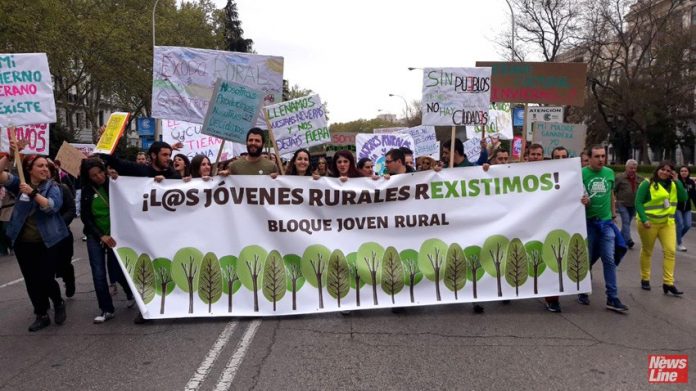
Spain’s Socialists increased their lead in a poll published recently in newspaper ABC with 30.9 per cent of votes, equivalent to between 131 and 134 seats in the 350-seat parliament, but fell short of a majority ahead of the general election on April 28.
A coalition of three right-wing parties – People’s Party (PP), Ciudadanos and far-right Vox – would get 46.5 per cent of votes, equivalent to between 157 and 166 seats at the parliament, but would also be short of the 176 seats needed to secure an outright parliamentary majority.
The Socialists’ support has increased by 0.3 per cent since a previous poll by GAD3 published by ABC on March 10.
Socialist Pedro Sanchez could clinch a majority to get re-elected as prime minister if he won the support of the array of parties, including Podemos and Catalan pro-independence parties, that backed him last June when he won a vote of confidence against PP’s government at the time.
The poll was conducted with 7,500 respondents between March 1st and 22 and had a margin of error of 1.1 percentage points.
Another poll published on Sunday by El Pais newspaper also gave the Socialists the victory in the election but with a smaller lead.
The party would win 27.1 per cent of the vote, or 122 seats, still short of a majority.
Spain’s prime minister, Pedro Sánchez, called a snap election for 28 April after Catalan secessionists joined rightwing parties in rejecting the socialist government’s national budget.
‘Between doing nothing and continuing without the budget, and calling on Spaniards to have their say, I choose the second.
‘Spain needs to keep advancing, progressing with tolerance, respect, moderation and common sense,’ Sánchez said in a televised address to the nation in February.
‘I have proposed to dissolve parliament and call elections for 28 April.’
Sánchez’s PSOE holds 84 of the 350 seats in congress.
Tens of thousands of Spaniards took to the streets of Madrid on Sunday to protest under the campaign of ‘Empty Spain’, a national platform that urges the government to take action over the growing concern of rural depopulation.
The movement, initiated by 85 grassroots organisations, has come to be known as the ‘revolt of an empty Spain’.
They protest against depopulation, urban-centered policies from the national government, and the lack of infrastructure in their rural regions, all of which have created ‘ghost towns’ – completely uninhabited villages and rural areas.
‘We are first-class citizens, just like everyone else. I want my people to be alive,’ said Miriam Martin, a 39-year-old rural professional who came from Piedrahita, a town in Avila with some 1,800 inhabitants.
The protest turnout estimates range from 50,000 demonstrators, according to the authorities, to 100,000 according to the organisers, all coming from rural and remote regions throughout 24 provinces of Spain.
‘The bleeding does not stop. Today in Spain 26 provincial capitals are losing population.
‘And if capitals recede, imagine the fall in the villages. We cannot let the rural regions agonise,’ journalists Manuel Campo Vidal, former president of the Television Academy, and Paloma Zuriaga, director of RNE told El Pais.
The issue can clearly be seen on a map, as 53 per cent of the national territory is inhabited by only five per cent of the population, according to a study by the Research Centre on Depopulation and Development of Rural Areas (Ceddar).
In Spain, 48 per cent of the municipalities have a population density lower than 12.5 inhabitants per square kilometre, a threshold considered low by the European Union.
And even though the rural population increased between 2000 and 2010, it has since declined to approximately 9,17 million people.
From 2011 to 2017, almost 62% of localities lost their neighbours, according to data from the Government Commissioner regarding the Demographic Challenge.
But people do not ‘just leave’ small villages and main cities in the country’s interior.
For example, the municipality of Molina de Aragon in the Guadalajara province (northwestern Spain) has a population density lower than Siberia.
With 1.63 inhabitants per kilometre, it is the area that has suffered the most in this process of depopulation. And the lack of people is not the only problem.
The affected territories are usually ‘economically depressed areas that are going backward or show less dynamic economies in contrast to other parts of the country,’ the Ceddar report states.
The problem is also in a demographic change in the country. Spain’s fertility rate of 1.3 per cent in 2017 was the second-lowest in the EU – just above Malta – and the gap in the country between urban and rural births is one of the widest in the bloc.
This lack of young people means the population isn’t replenished in order to generate functional local economies, so people are being pushed towards the bigger urban cities.
Yet as rural Spaniards protest, business has taken advantage.
According to the realtor Aldeas Abandonadas (Abandoned Villages), there are about 1,500 discarded hamlets in Spain, which are now up for sale for as little as US$100,000.
These large land properties are being bought as secondary investments, changing the agricultural production dynamic they once had, something campaigners have been warning about – that food for the big cities only comes from the rural areas.
This new wave of problems comes as Spain faces the very disputed national election on April 28, where the rural vote will be key.